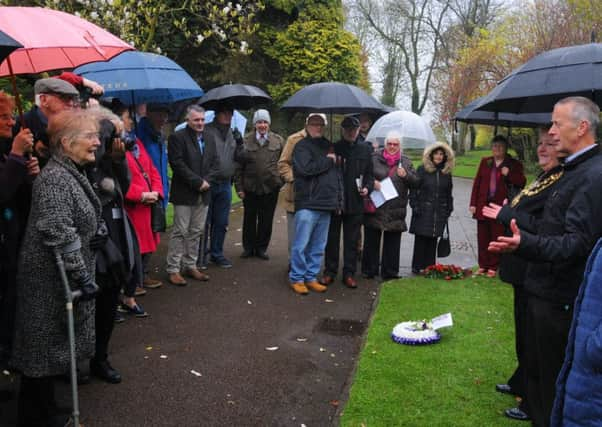Salute to worker heroes


The annual Workers’ Memorial Day ceremony, organised by the Friends of Mesnes Park and held in the popular town centre green space, takes place on Friday.
Wigan MP Lisa Nandy and the Mayor of Wigan Coun Ron Conway will lead the tributes to those who have paid the highest price in the course of their employment, with councillors and trade union representatives also speaking.
Advertisement
Hide AdAdvertisement
Hide AdThe friends’ group says the ceremony is an appropriate reminder of Wigan’s industrial past and the often-horrendous dangers that residents faced at work and also a challenge to ensure people are kept safe in their jobs today.
Friends group member Sue Turner said: “We think it’s very important to remember those who have died or become ill in the course of their working lives.
“The park itself has an industrial heritage and coal was mined there, and you only have to look around Wigan to see the level of disability caused by industrial work. It’s not just mining, there are trades such as construction and there were horrendous accidents in the cotton industry.
“It’s a part of our past but also our present. People still become ill and even die as a result of work and jobs such as the emergency services are still dangerous.”
Advertisement
Hide AdAdvertisement
Hide AdCeremony participants will gather at 11.45am on Friday at the memorial tree next to the Bridgeman Terrace gates.
The event opens with a minute’s silence before the speeches from politicians as well as Wigan Trades Council and Eric Foster, an ex-miner and National Union of Mineworkers official.
The mayor will lay a wreath and guests will be invited to put down red roses that they are asked to bring themselves.
Although known today as one of the town’s loveliest green havens Mesnes Park has its own links to heavy industry and toil.
Advertisement
Hide AdAdvertisement
Hide AdIt was once home to no fewer than three pits, some of them producing the distinctive glossy cannel coal which was carved into ornaments.
The area, which was part of the rector’s land, had long since fallen into industrial disuse by the time the park was laid out in the late 1800s.